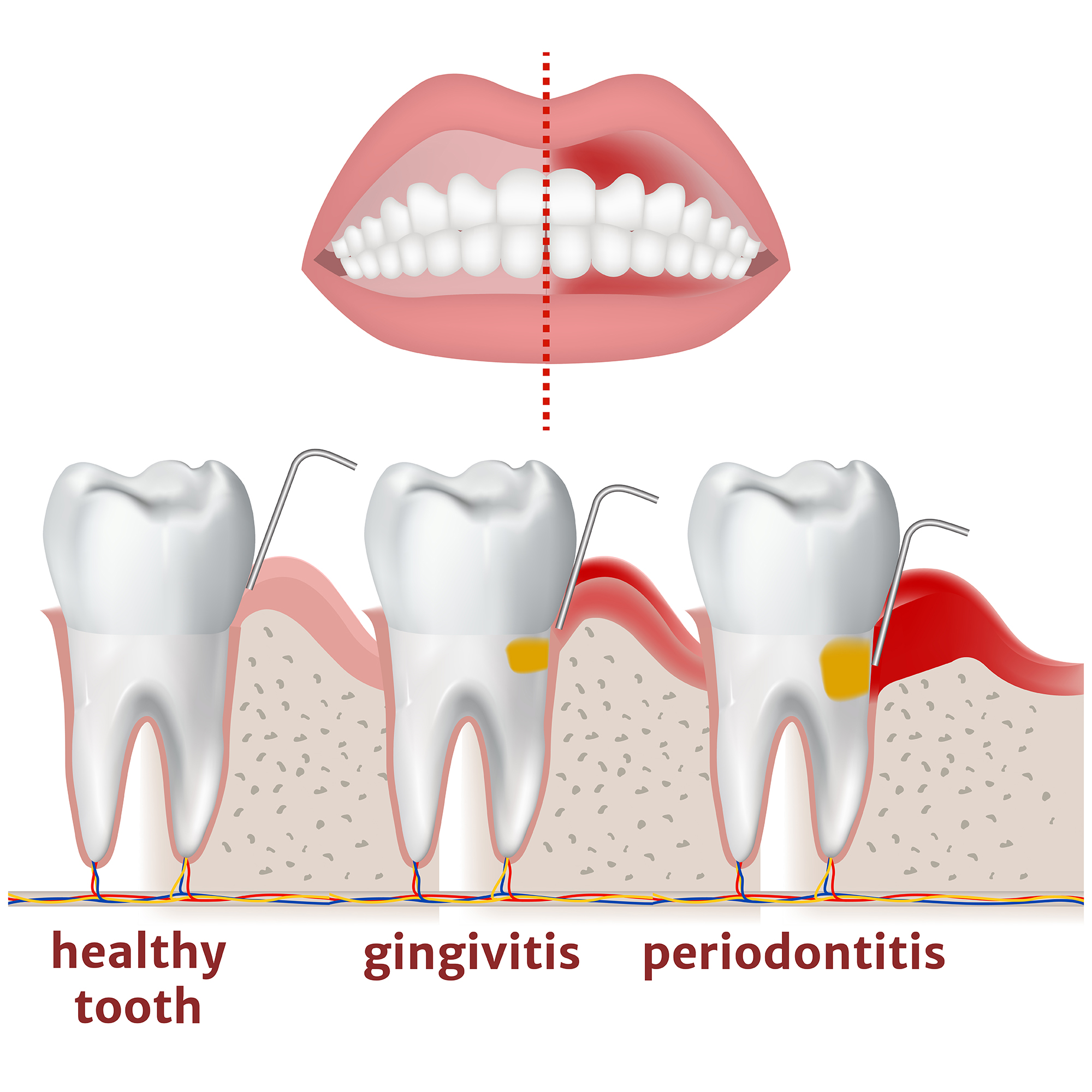If you read last week’s blog post, you probably have a good idea what happens at a routine dental cleaning.
But what if your dentist recommends a more involved cleaning? How do we decide what kind of cleaning is best for you, and what can you expect?
Scaling and root planing, also known as deep cleaning, can improve your oral health by:
- Removing the hard deposits and bacteria that cause gum disease
- Providing a clean surface for your gums to attach to
- Slowing or stopping progressive bone loss that can lead to losing your teeth
Let’s dive in.
Why Does My Dentist Say I Need a Deep Cleaning?
Scaling and root planing is a procedure that allows your hygienist to completely remove plaque and tartar (calculus) that has developed deep below the gum line.
Like the cuticle of your fingernails, the edge of your gum tissue is not attached to the tooth. There is a collar connective tissue that glues the gums to the tooth root, which should be about 2-3 millimeters below the gum line.
Since every cleaning should remove deposits and bacteria from below the gums, how does your dentist decide what kind of cleaning you need?
It’s all in the numbers.

If your gum measurements show deep areas of unattached gum tissue with numbers higher than 5mm, your dental team may recommend additional procedures to treat that area.
Untreated gum disease not only damages the gum tissue; it can also eat away at the ridge of bone that supports your teeth. So, we’ll also take a close look at your x-rays and evaluate the position and condition of the bone sockets to determine whether your gum disease has progressed and damaged the bone.
Your x-rays may also show us if there are hard deposits on the roots of your teeth, which is an indicator that you probably need a deep cleaning.
At Lake Baldwin Dental, we prefer to be as conservative as possible with our treatment recommendations, so we may attempt to treat areas of inflamed gums conservatively first. However, your oral health is always our priority, so we’ll make the best recommendation for your long-term health.
What to Expect at a Deep Teeth Cleaning
How is a deep cleaning different than a routine dental cleaning?
There are a few things that set the procedure apart.
- It may take longer to remove large, dense deposits deep below the gums.
- Working to the base of a deep pocket can be uncomfortable, so we may need to numb the areas we’re working on.
- We may need to take an x-ray after cleaning the area to confirm that we removed hidden deposits.
Taking all that into account, here’s an idea of the typical scaling and root planing procedure.
First, your hygienist or dentist will recommend splitting your deep cleaning into several phases. We may recommend cleaning the left side of the mouth in one appointment and the right side at another.
We do this for several reasons. First, it’s safer and more comfortable to only numb one side of the mouth at a time. Second, your gums and teeth may feel tender for a day or two after your cleaning, so it’s best to leave one side that’s comfortable to bite and chew.

Once you’re numb and comfortable, your hygienist will spend the bulk of your appointment completely cleaning all the deposits from the root surfaces of your teeth. Depending on how heavy your build-up is, we may need a longer appointment to do the job properly.
When we’re confident that we’ve removed everything, we may take a quick x-ray to confirm that there are no more deposits below your gums.
We’ll bring you back on a different day to do the same procedure on the other half of the mouth.
We typically want to give your gums a few weeks before a third appointment. At that time, we’ll:
- Measure your gums to evaluate how your inflammation is healing.
- Retouch any areas where we weren’t able to completely remove deposits due to too much inflammation or tartar that was too dense or large to remove in one appointment.
- Polish your teeth to remove stains and give your smile a refresh.
- Schedule you for follow-up visits based on your individual case.
We understand that many patients may feel intimidated about getting a deep cleaning. It may have been a long time since you’ve had your teeth cleaned, or you may want to get other treatments like fillings completed in the same day.
If you need it, Dr. Dunn and Dr. Nestle offer oral conscious sedation and nitrous oxide to help you relax and stay completely comfortable through every phase of your treatment.
Is a Deep Teeth Cleaning Worth It?
Your scaling and root planing may mean the difference between severe periodontal disease and a return to healthy gums. Timely periodontal disease treatment can even save your smile and prevent serious pain from changes to your bite and eventual tooth loss.
However, it’s not a guarantee that you’ll never deal with gum disease again.
To get the most out of your deep cleaning, it’s essential that you follow the instructions your dental team will give you for how to care for your teeth and gums after your procedure.
We may recommend a water flosser to flush out deep pockets where a toothbrush and floss can’t reach. In most cases, you’ll need to have cleanings every three to four months for the first year or two to prevent tartar buildup while your gums return to a healthy attachment position.
If you’ve had periodontal disease in the past, or it’s been a while since you’ve seen a dentist, contact our dental office in Baldwin Park, FL to schedule your complete oral health evaluation. Our goal for scaling and root planing is to reverse the effects of gum disease and restore strength to your gums so you can keep smiling, Orlando!

